D.C. United occupy 13th in the Eastern Conference of Major League Soccer, having accumulated 26 points from 25 matches, reflecting statistically poor performance in a forgettable season.
On the defensive front, the stats are considered catastrophic, as D.C. United rank as the third-worst defensive line in Major League Soccer, conceding 50 goals after SJ Earthquakes and Sporting KC, who’ve conceded 61 and 52, respectively.
On the offensive side, their performance is relatively better, leaning towards average, having scored 35 so far.
However, a glimmer of hope emerges at the end of the tunnel, as their distinction lies in their offensive set-piece prowess.
They are considered one of the top teams in MLS in terms of attacking set-pieces, achieving an expected goals (xG) of 14.04 from set-pieces.
Head coach Troy Lesesne heavily relies on their standout striker, Christian Benteke, who excels in heading and aerial duels, as their primary target for direct scoring or assisting with headed passes to teammates.
This tactical analysis will discuss DC United‘s simple and effective tactics for exploiting their attacking set-pieces.
Additionally, we will explore the reasons behind the gap between their expected goals (xG) from set-pieces, which is 14.04, and their actual set-piece goals scored 11.
Exploiting Christian Benteke
As we have mentioned, they hugely depend on Christian Benteke as the targeted player, but what is their way to merge his ability in aerial duels?
They prefer to target the far post and even the area after it because it is usually less crowded with zonal defenders while making a good trick to give him an advantage over his marker.
Let’s see that in detail!
As shown below, the opponent defends with four zonal defenders, five man markers and a player on the edge of the box.
As the taker moves, movements begin:
1- A player tries to drag the last zonal defender, making him shift a little toward the near post to make the targeted area more empty.
2—Two players in the green move toward the near post in fake movements to drag their markers with them and also to make the first zonal defenders step forward, which may help in the desired shifting of the zonal line.
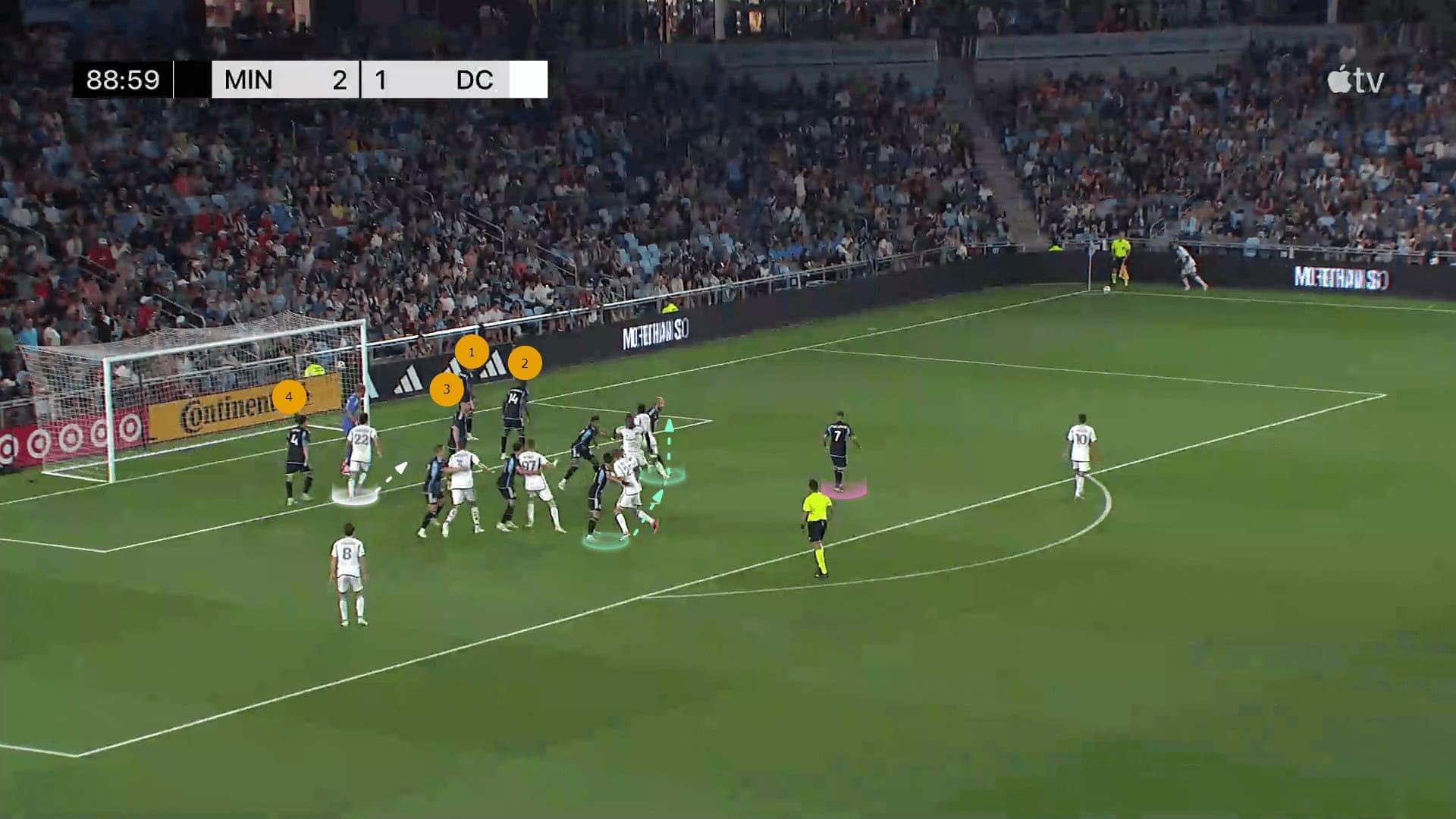
Here, we reach the most important point: how Benteke escapes from his marker.
He starts on the near post and then turns around to go to the far post, but why?
Doing that gives him many advantages: The first one is to achieve a separation between him and his marker with the help of two mates, so the marker has the option to follow Benteke’s path, which makes Benteke reach the targeted area first.
The marker can also turn around the pack, trying to catch him up, but he loses moments while Benteke will reach running, meaning that he will jump with good momentum.
To make sure, these two mates try to block him or slow him down at least.
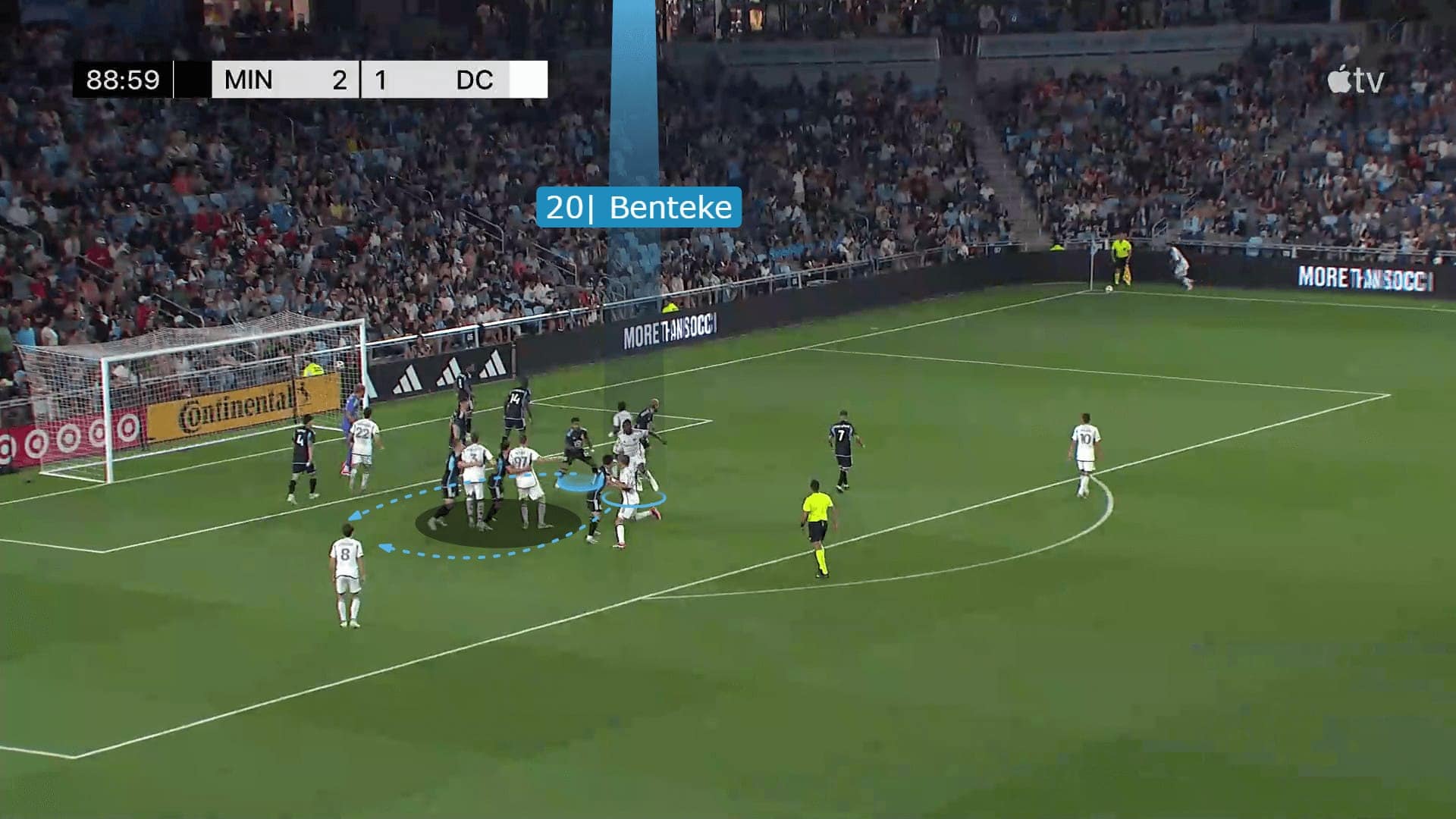
The plan starts to succeed, and the last zonal defender steps toward the middle, meaning that he will step with his back after realising the trick.
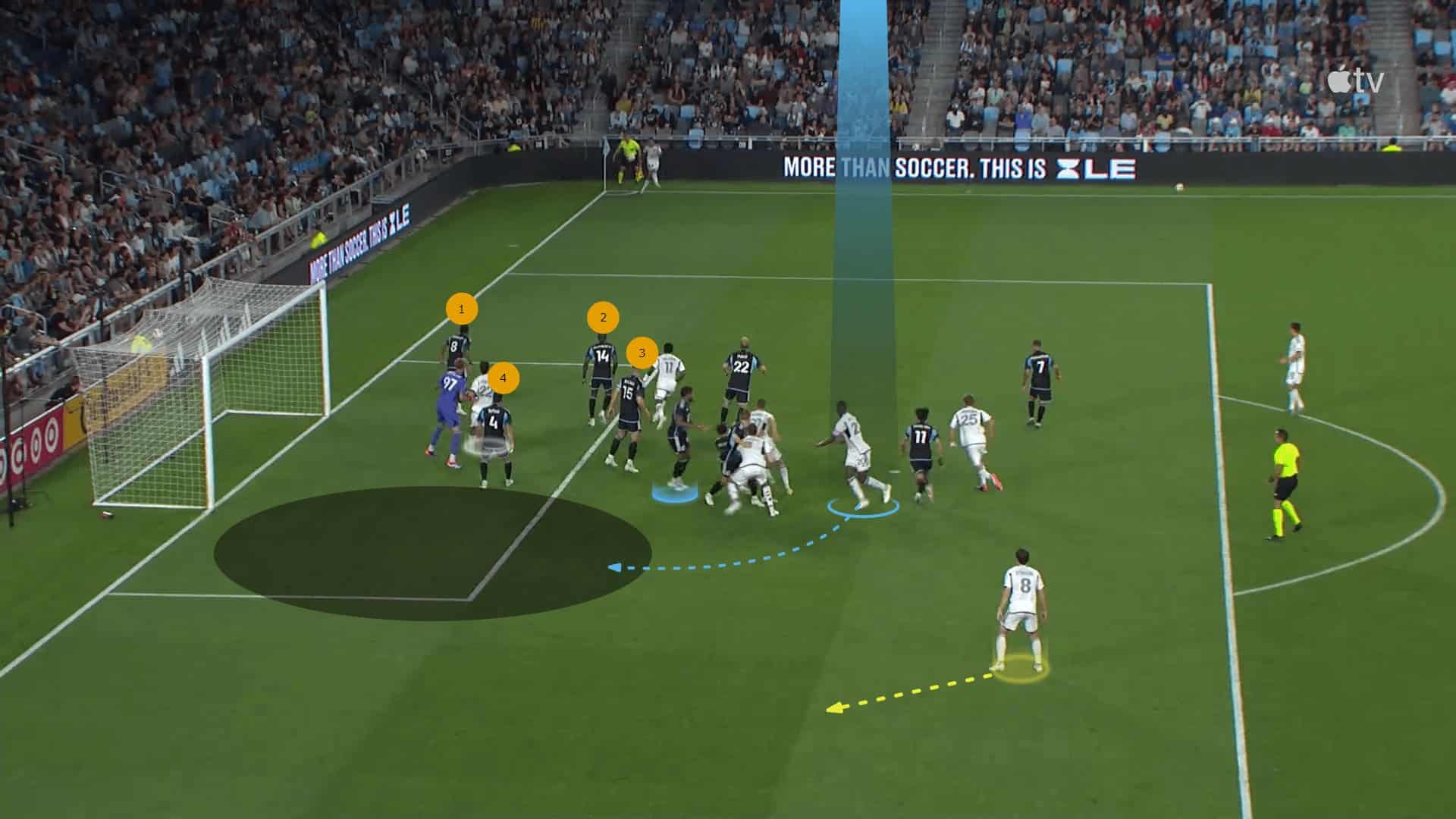
So now, the last zonal defender tries to step with his back, and a mate tries to slow down the man marker, which means that Bentteke is in a good situation to stand out and show his great ability.
Here, we want to focus on an important factor: the type of cross.
They prefer the floated cross for many reasons.
The first one is that this type of cross takes a while in the air, which is enough to complete the whole process.
The second one is its high level, which forces defenders to raise their necks, giving the targeted player an advantage because the marker has an orientation problem, meaning that he can’t track the ball and the marker properly at the same time, putting into consideration the additional orientation problem because of Benteke’s movement from the near post to the far post which forces the marker to choose one reference, the ball or the attacker.
He chose the attacker, giving his back to the ball and losing contact with it at the beginning when he turned around.
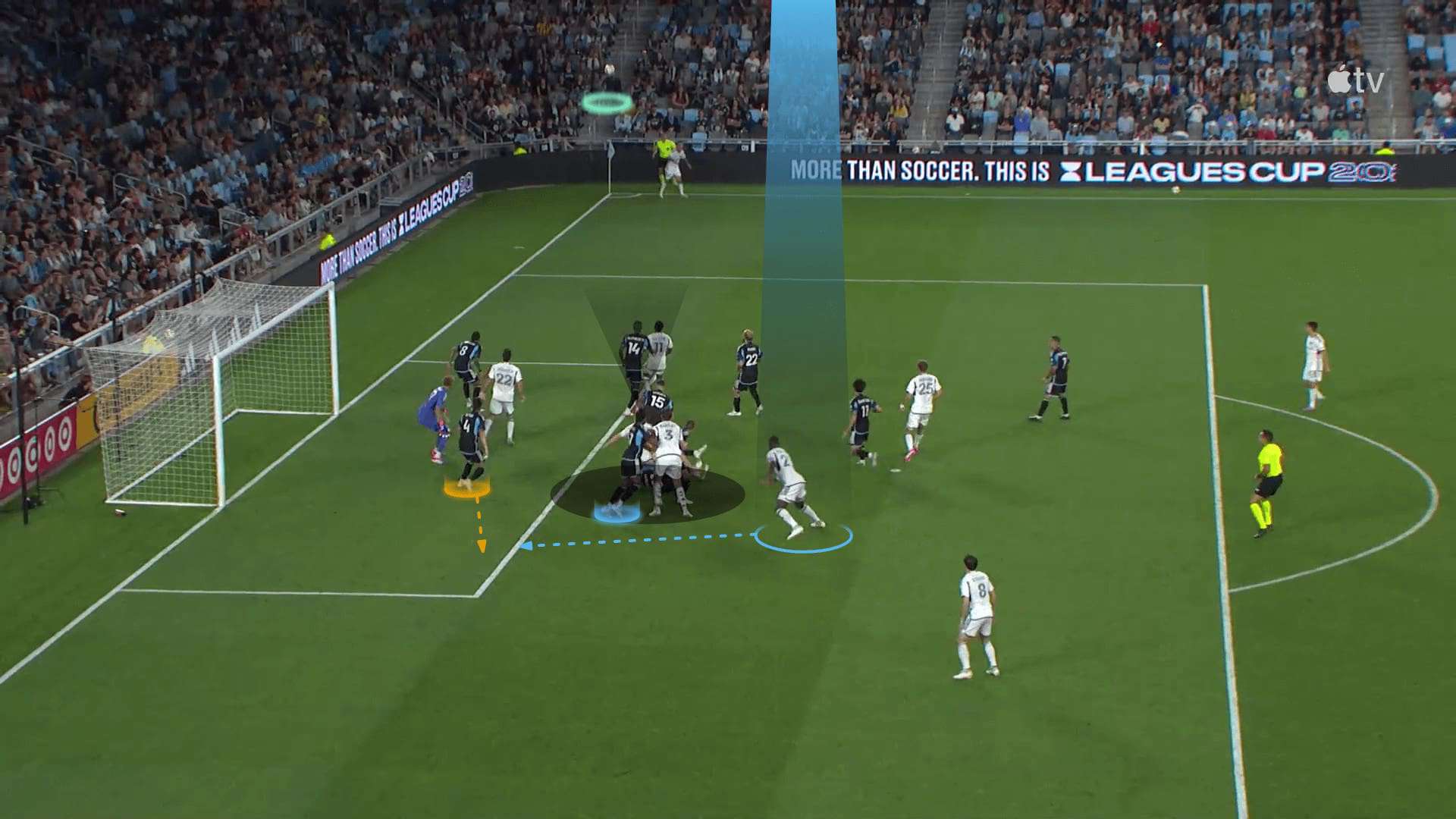
The first part of the plan works, but this type of cross, plan and targeted area makes it sometimes harder to target the gaol directly, so it’s important to have players waiting for the headed pass, as shown below.
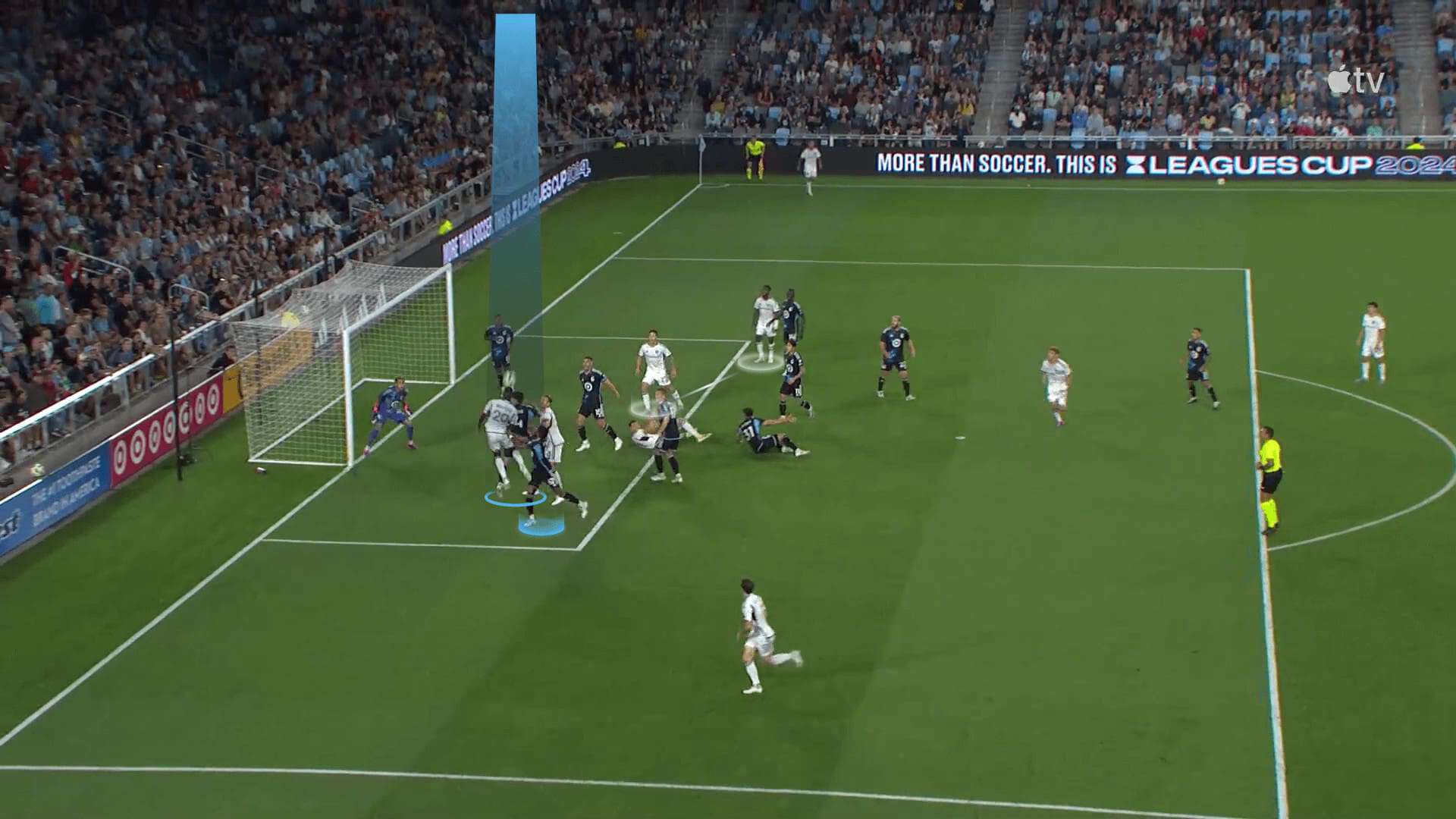
The second part also works, and the result is a goal.
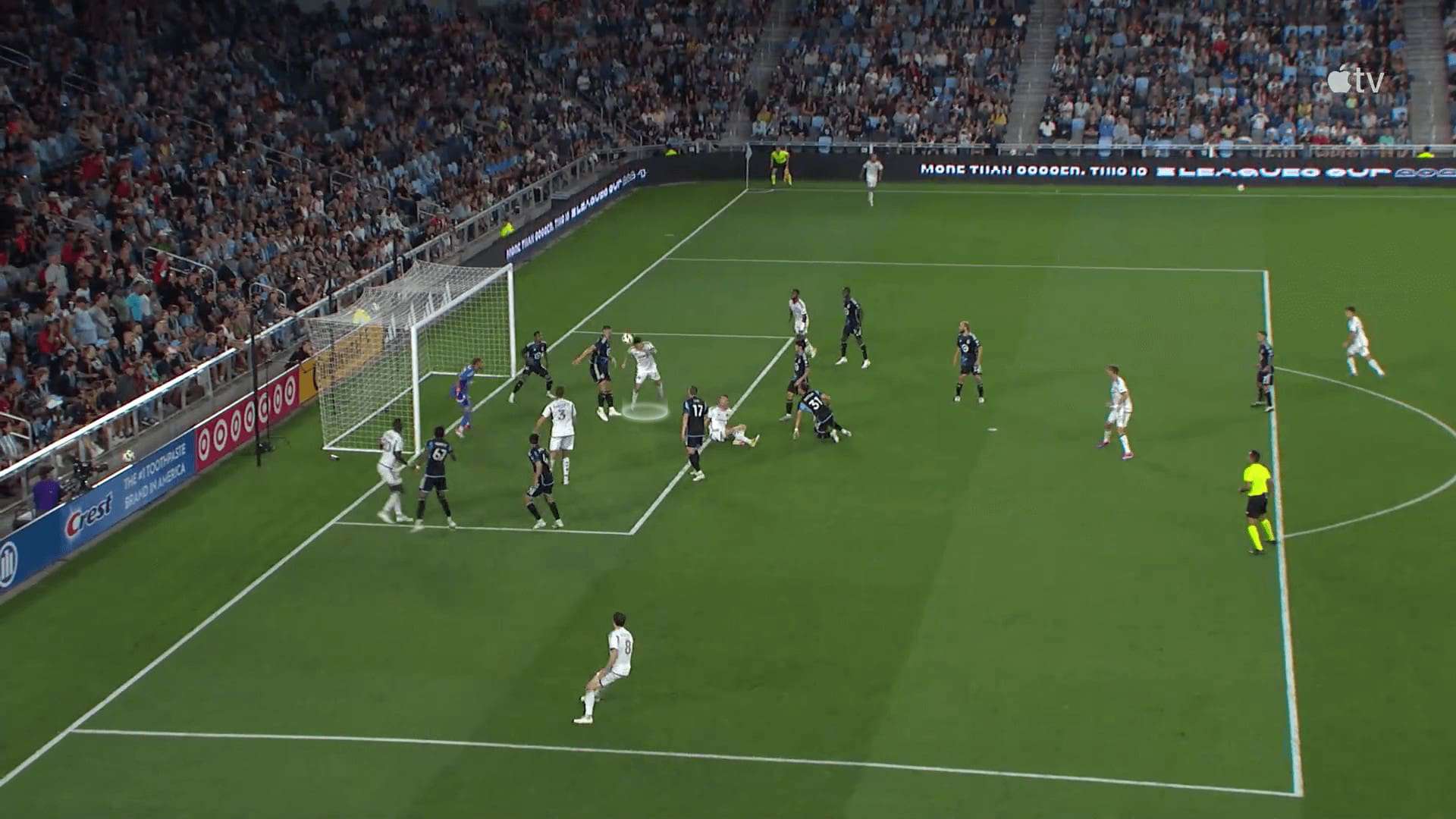
In the two photos below, a similar plan is followed by asking Benteke to start in the middle and then turn around, causing orientation problems for the marker.
However, this time, he uses the help of only one mate to do a frank screen, meaning that the marker becomes surprised after turning around and finds a mate standing in his way, trying to block him or at least standing in his path.
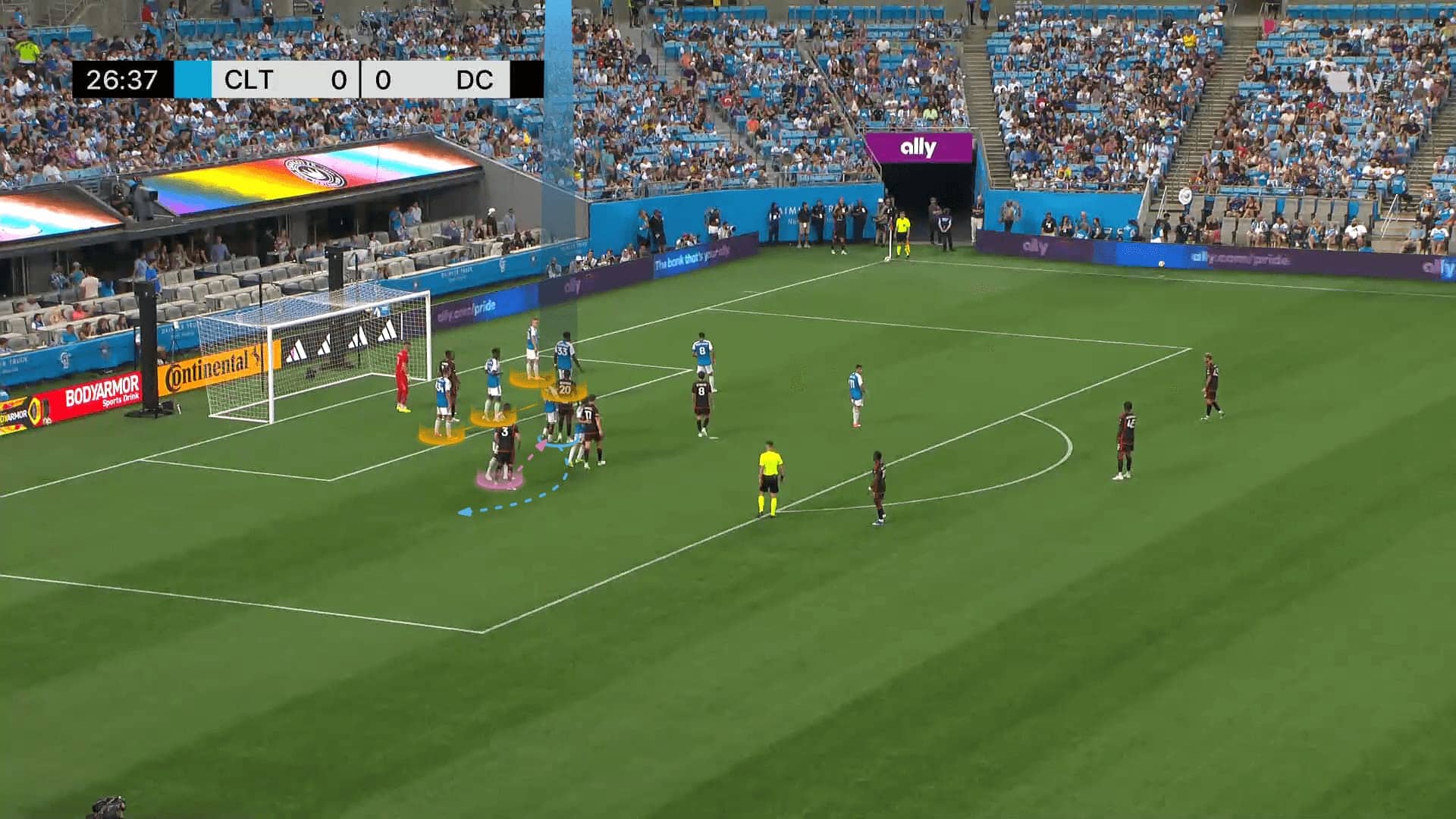
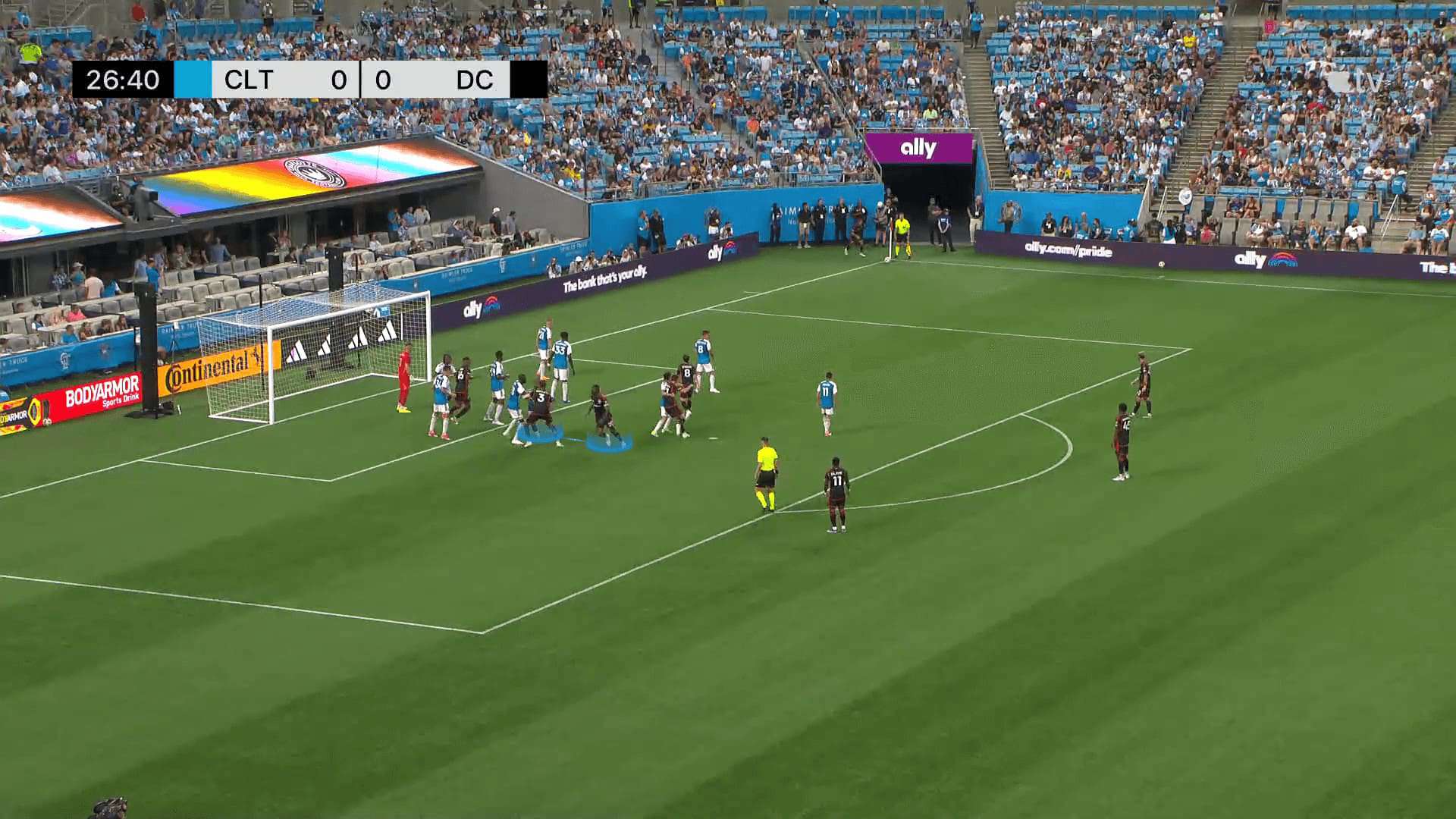
Benteke, as usual, overcomes the last zonal defender who goes out of position to chase the ball, but here we want to show another benefit of this plan: exploiting the chaos that happens with the zonal line when the ball reaches this far area.
Most teams are not organised while moving forward to stand in a line, so it is easy to find gaps through the zonal line after the new positions while the man markers keep following their assigned attackers behind it.
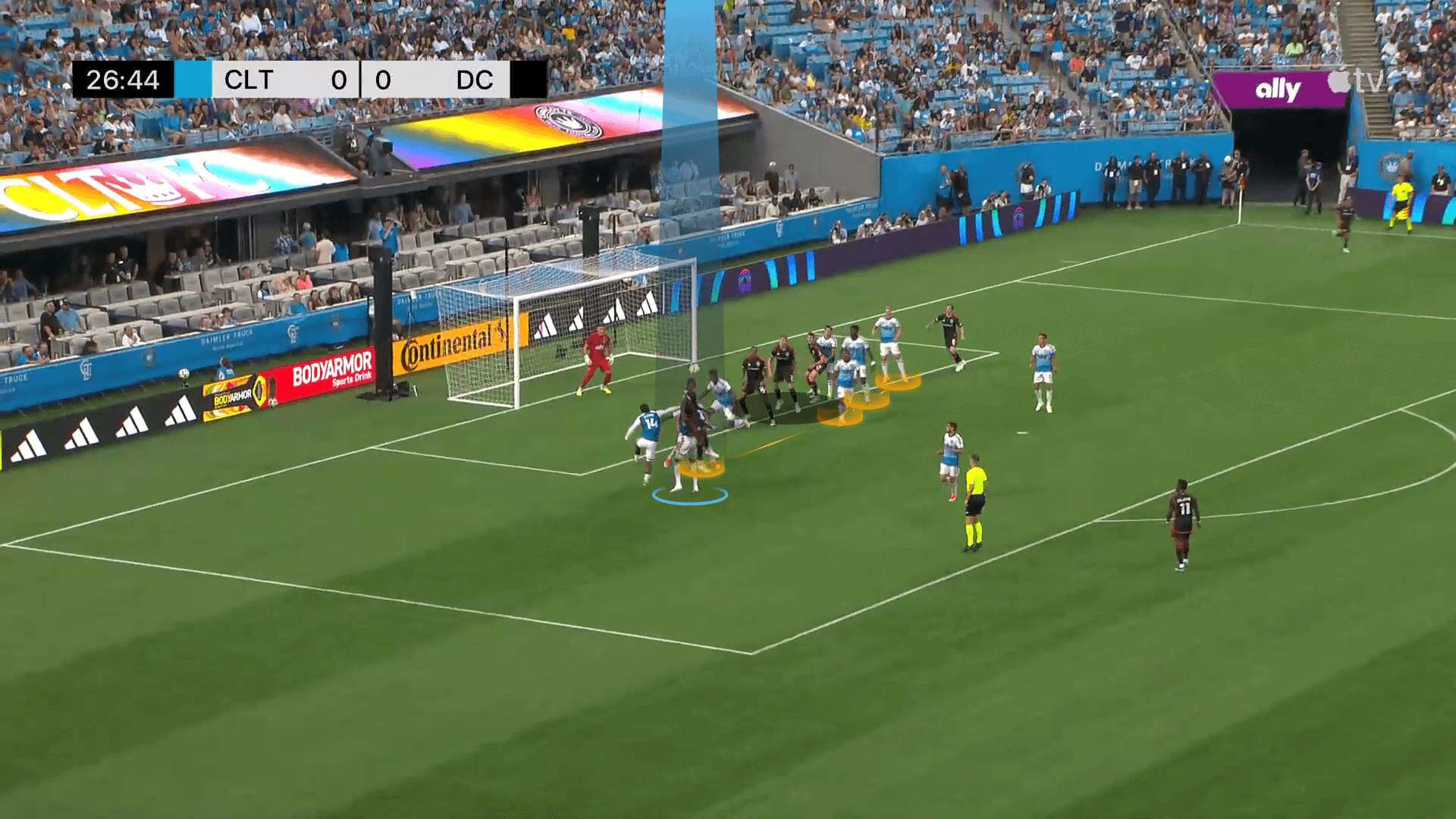
As a variation, they sometimes ask Benteke to start on the far post.
Still, this time, they target another player who turns around him from the middle, exploiting the same orientation problem.
In contrast, Benteke is asked to move toward the last zonal defender, taking his attention for a moment to slow down his reaction to go out to the actual targeted player, as in the two photos below.
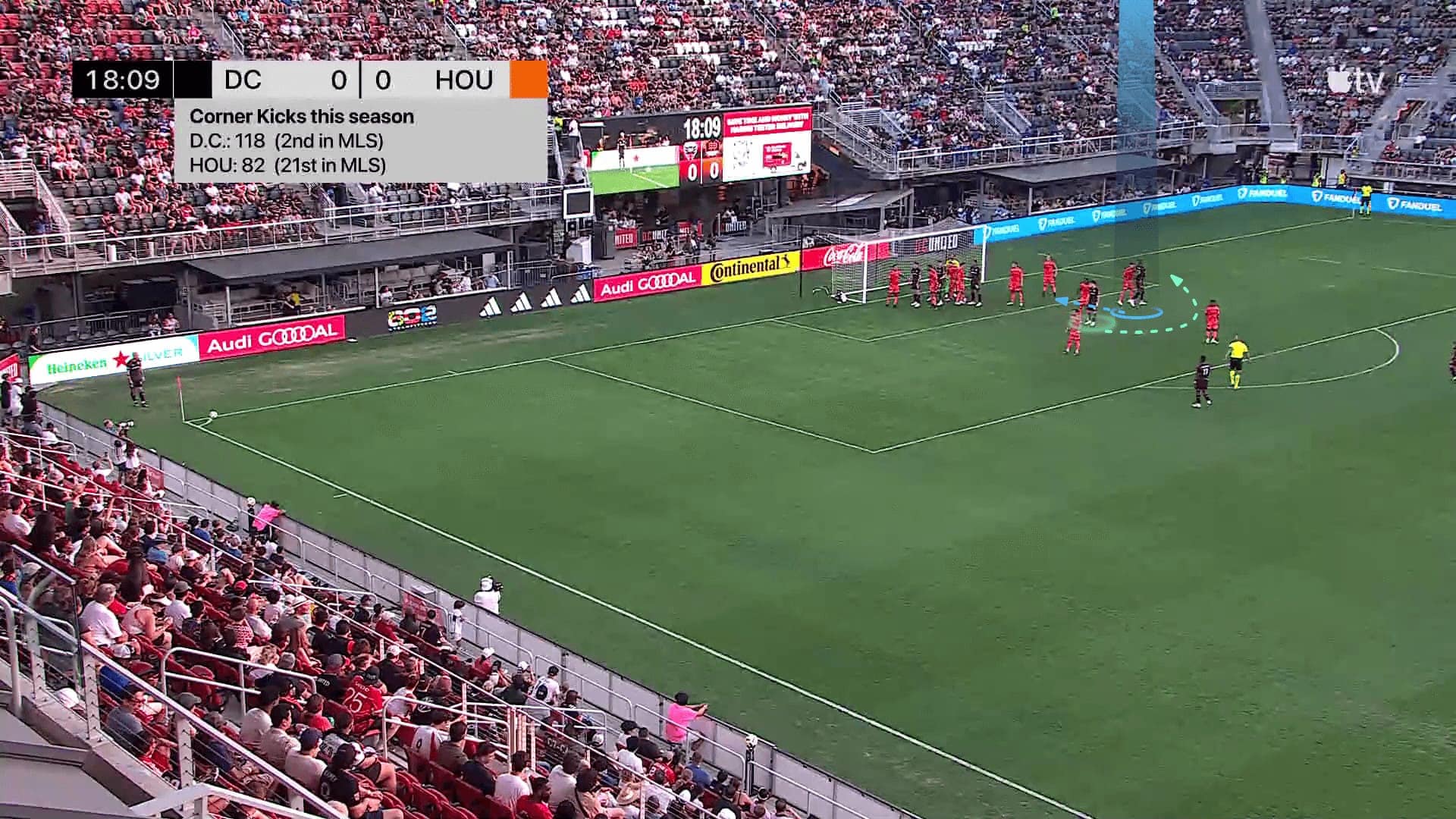
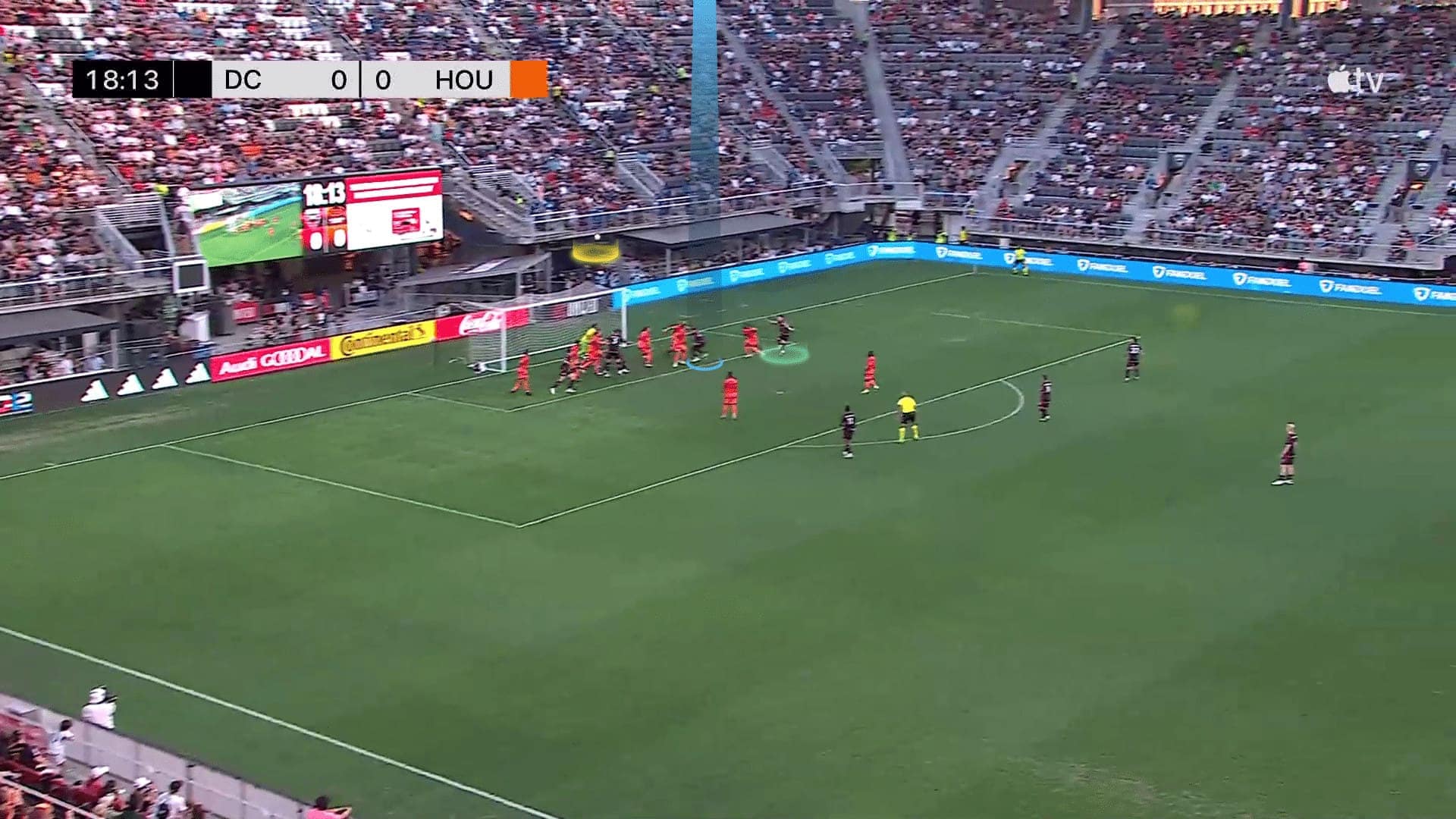
After that, Benteke joins his mates, waiting for the second touch, but the first targeted player can’t control the ball well.
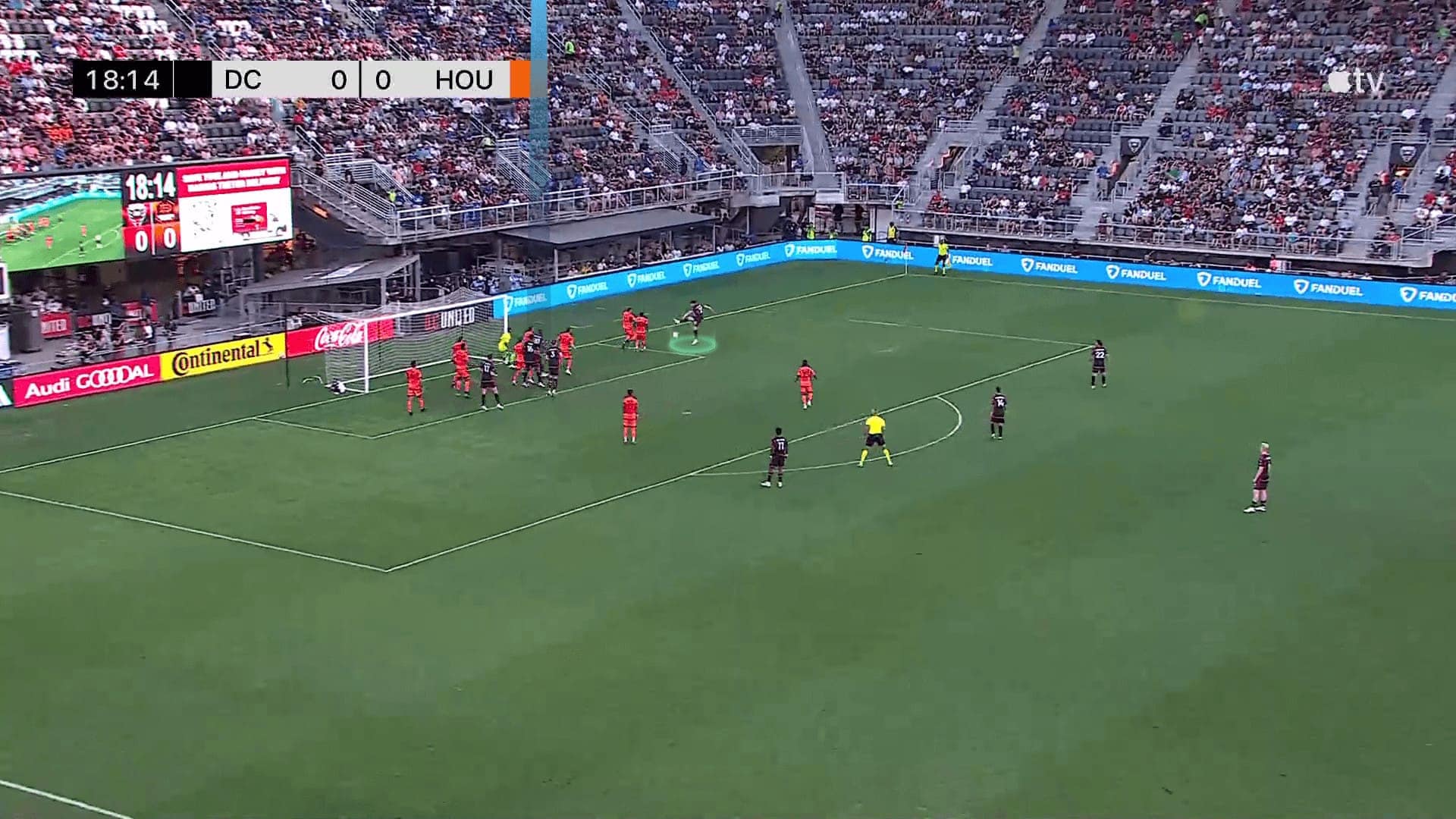
Counter idea
Some teams tried to adapt to that, and here is a good one.
In the photo below, the opponent gives more priority to zonal marking, so they have five zonal defenders.
This means that they will be awaited four after giving the permission to the last one to go out chasing the ball, which helps in reducing gaps between through the line.
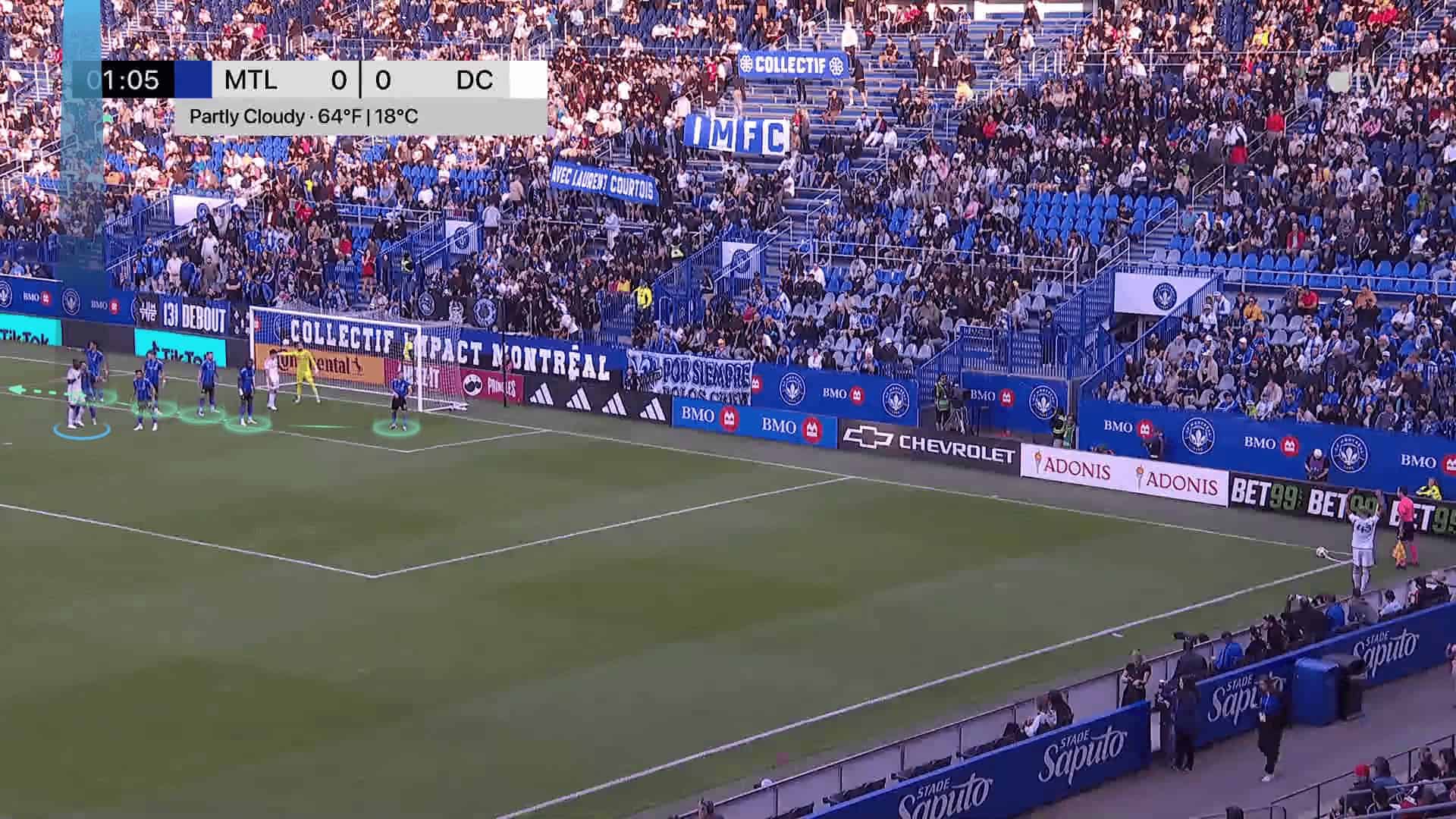
A good thing could be done, too, which is to assign one of the best headers on the far post to be able to kill the problem from the beginning.
In this case, ask him not to be dragged inside or leave his zone except after realising that the targeted area is after the far post.
Then, he can go out while his mates are ready to cover the six-yard.
Here, we should mention that elite teams ask their zonal defenders to stand in a line, meaning that the first one runs forward after realising that the ball passed him to form a line with his mates, not to stand on the goal offside ring the off-side as in this case.
They also ask the goalkeeper to claim the ball when it passes through the six-yard if it is possible, and it is clear nowadays that claiming the ball in crosses and set-pieces is a good factor when elite teams buy goalkeepers.
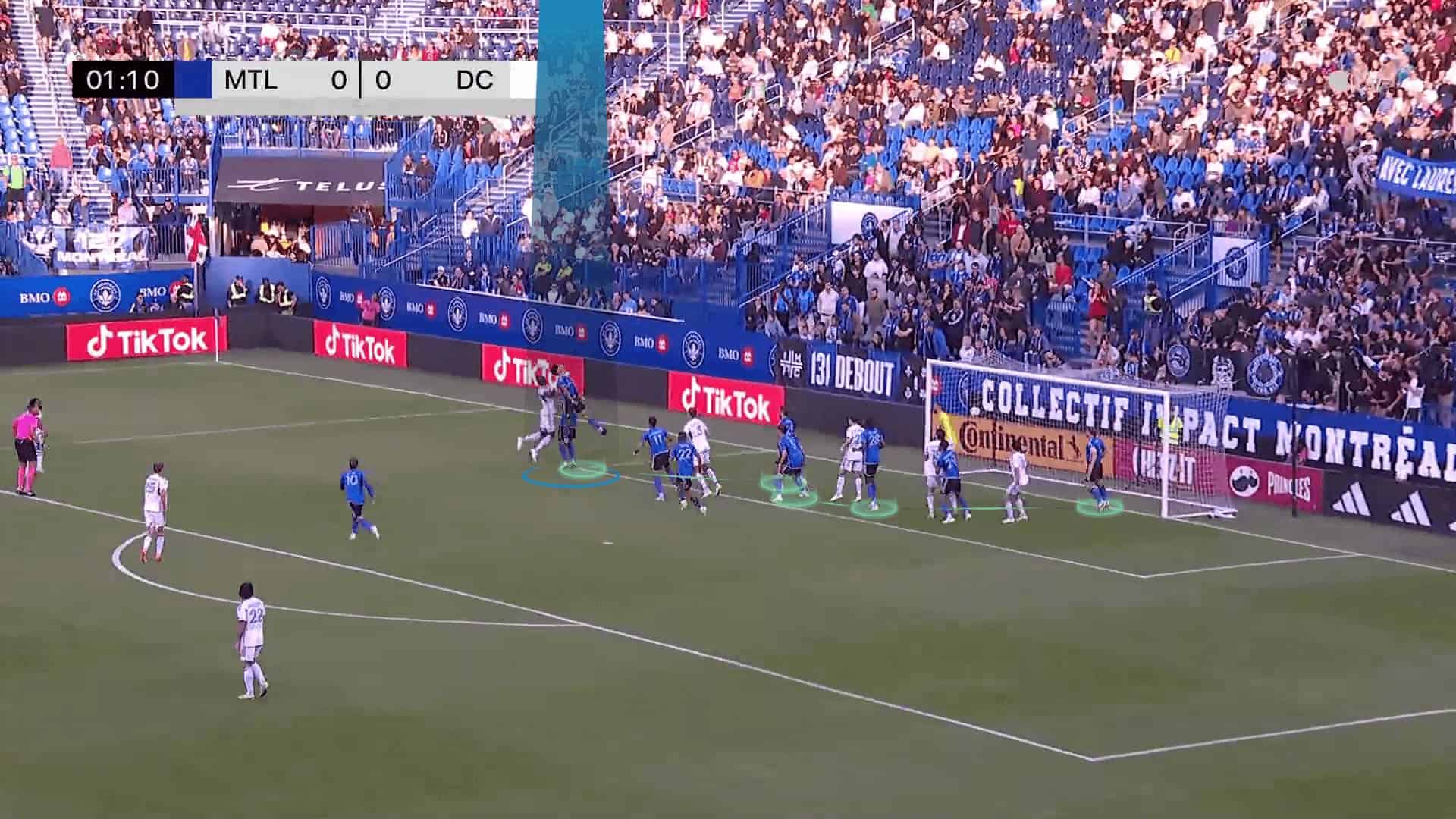
Free-kicks
The same simple but effective strategies are also followed by free-kicks, who have clear ideas about how to threaten the goal.
One of the offsides is using off-side players for many reasons.
Let’s explain in detail.
In the photo, the offside player in yellow is ready to block a defender from his back to empty the way of the free-awaited Benteke in front of the line, and these movements start when the first taker moves.
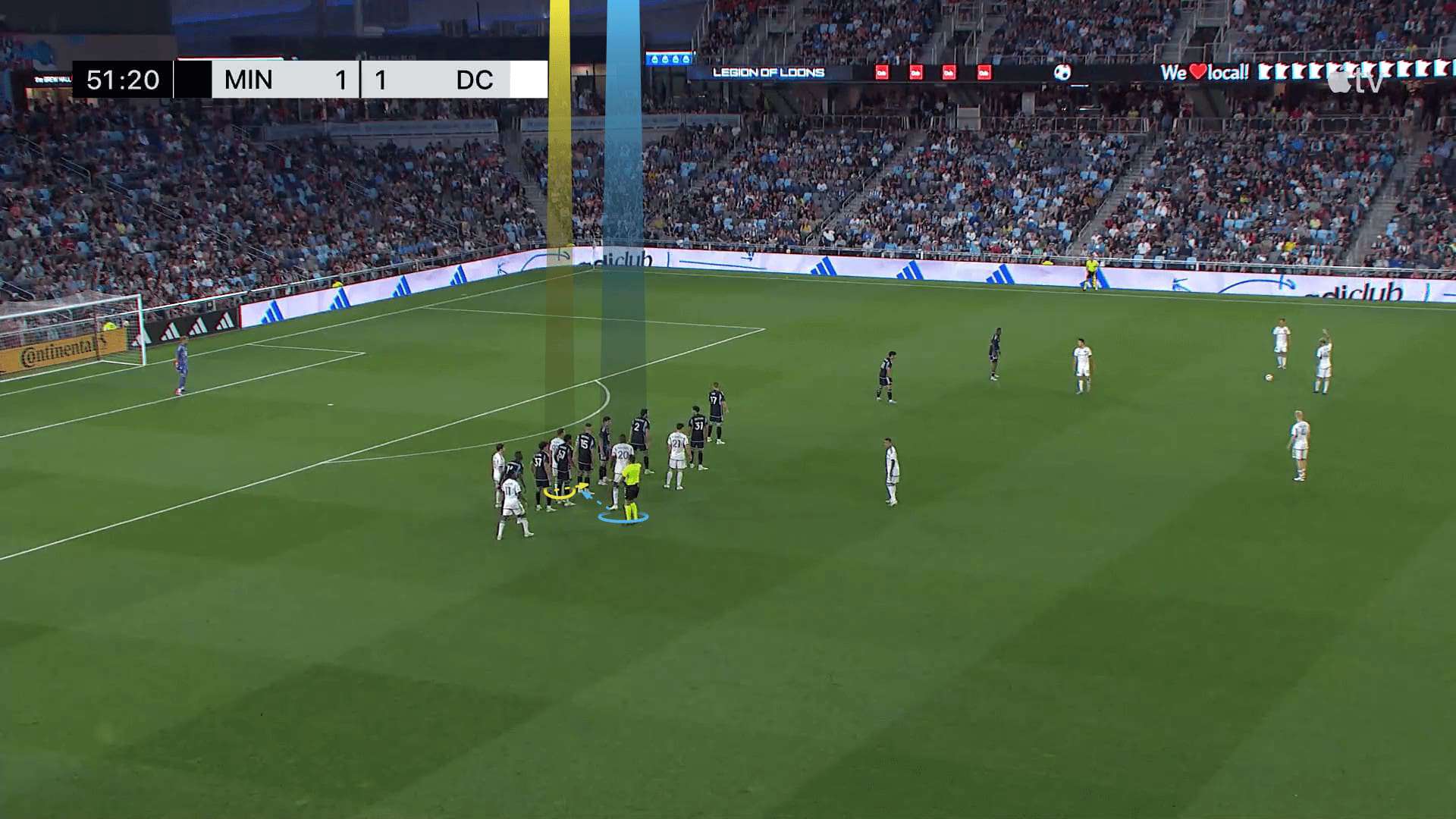
The first taker is a fake one, but the defender has already been blocked after trying to step back with the line, so Benteke will run like in a race, getting closer to the goal until the cross is played by the second taker, as in the two photos below.
This is effective against teams that drop early and are still dropping after the first fake movement.
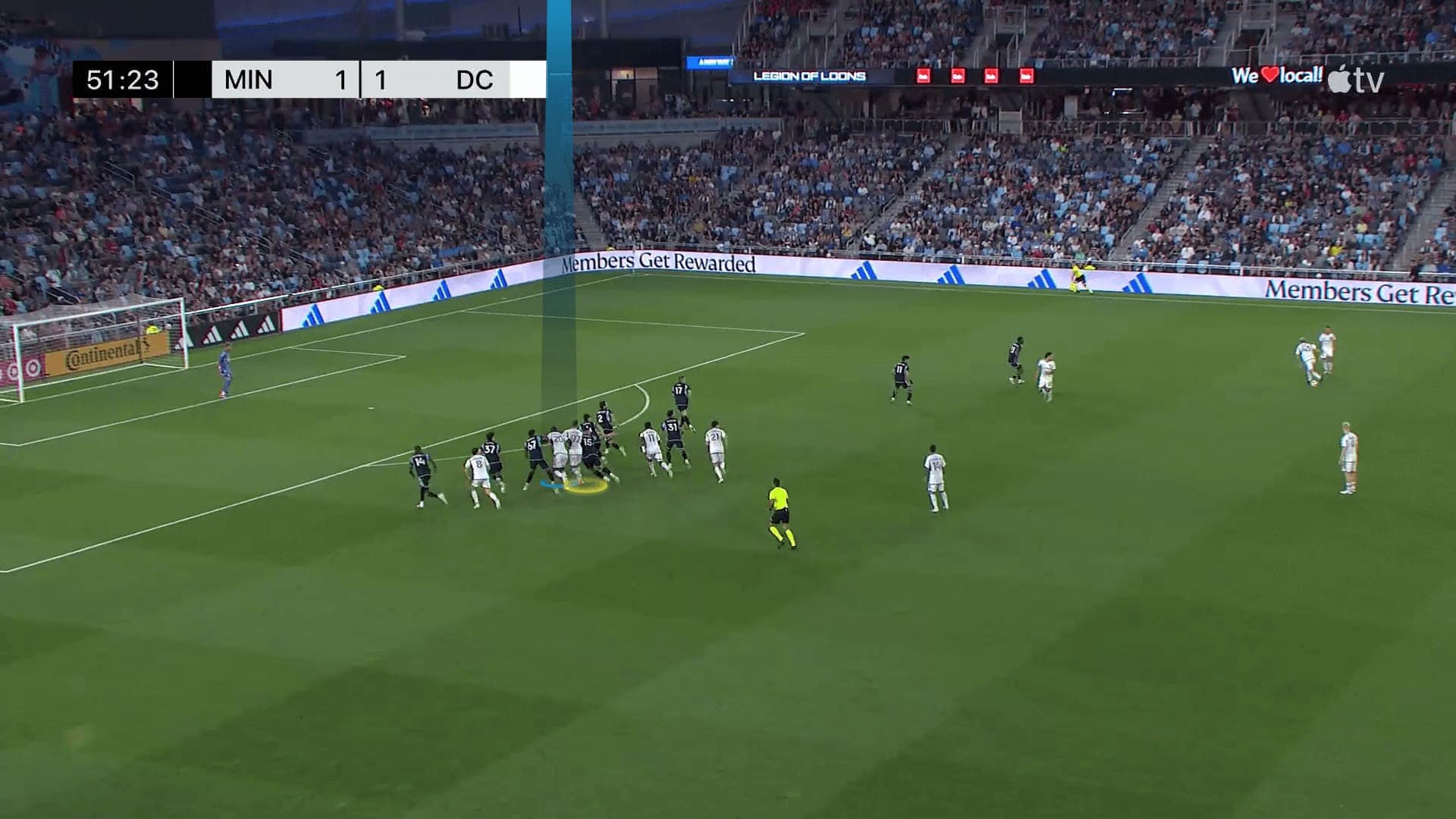
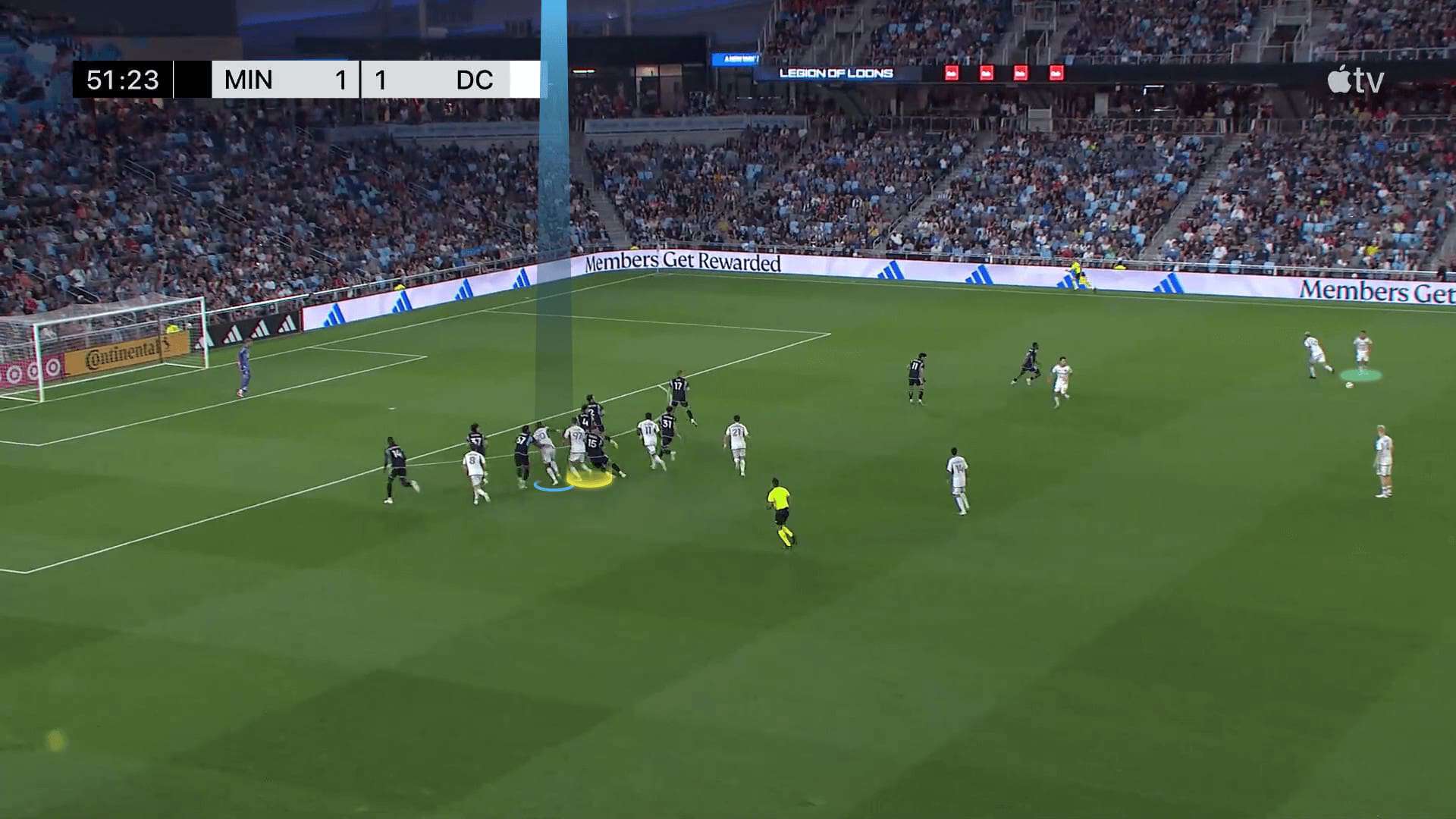
The plan works while another attacker runs to help in case the cross passes Beneteke and to tempt the defender to still offside cover the offside.
All of this is executed well, but the starting position of the goalkeeper helps him to get the ball at the last moment to be a dangerous chance however, as in the two photos below.
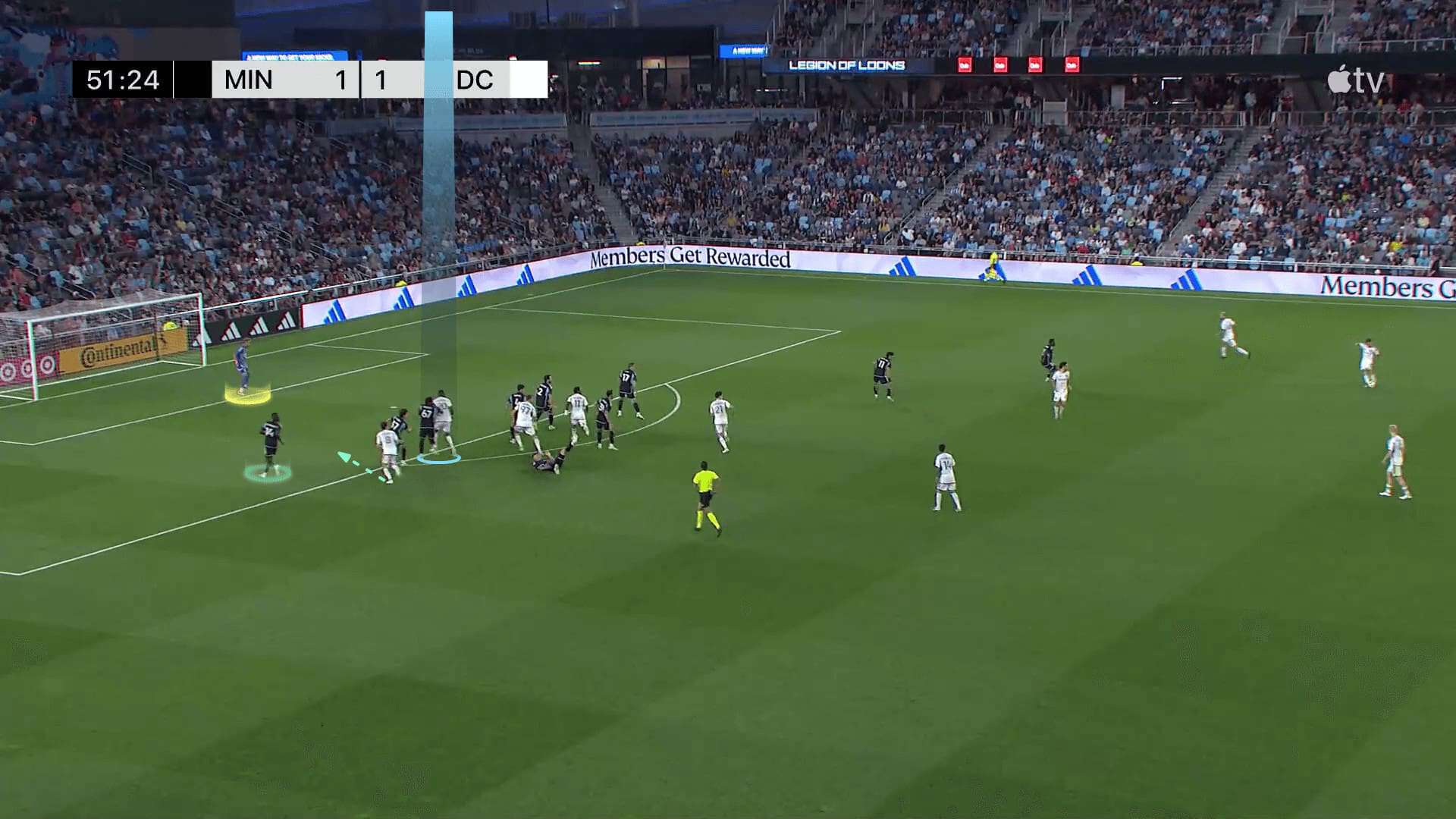
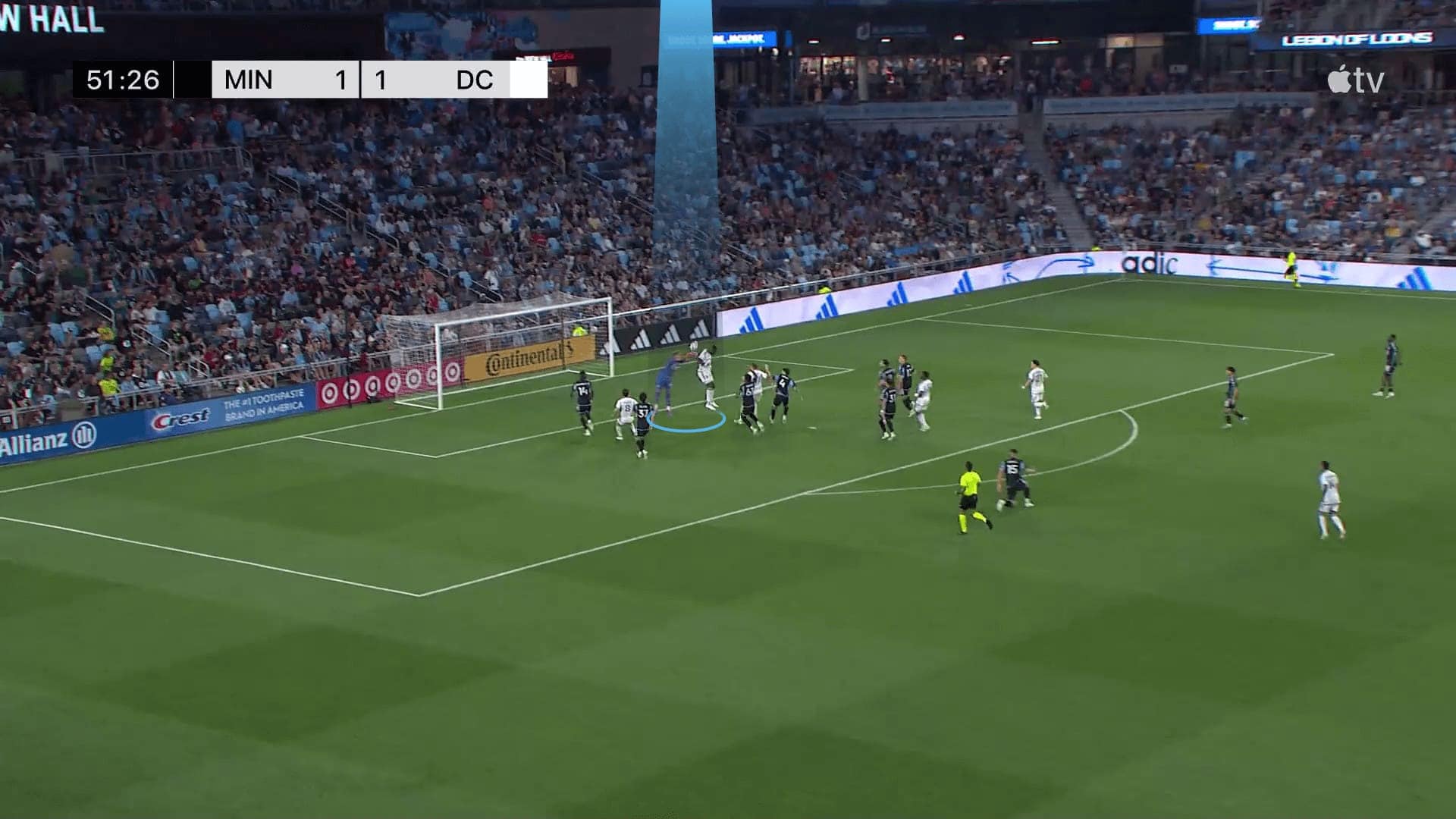
A similar idea is executed below to target the player in pink using the yellow-highlighted defender’s block, but this time, two other off-side players in green will be an option for the second pass.
Then, they will be free and onside because they will try to make the ball in front of them easily, as in the two photos below.
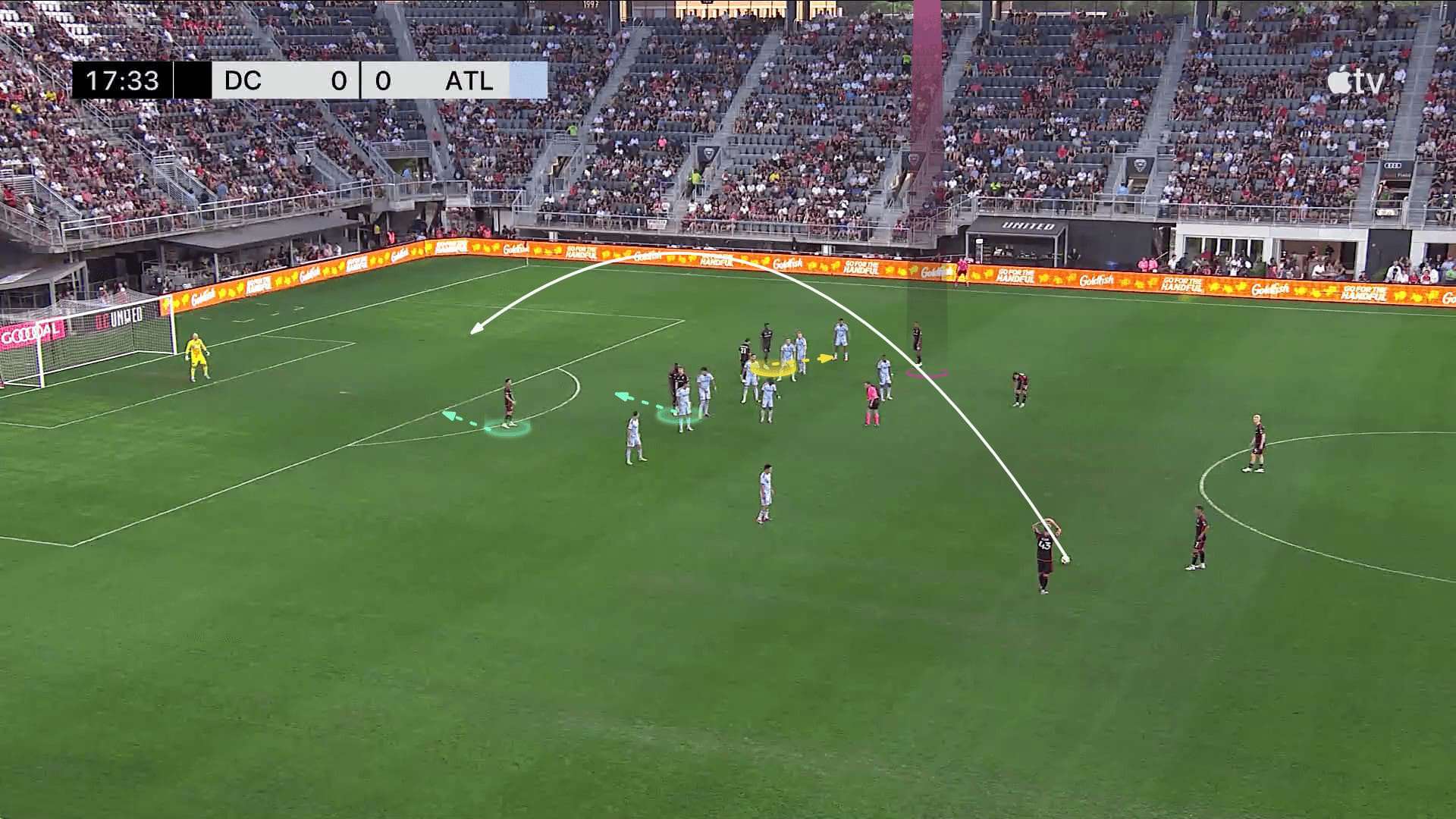
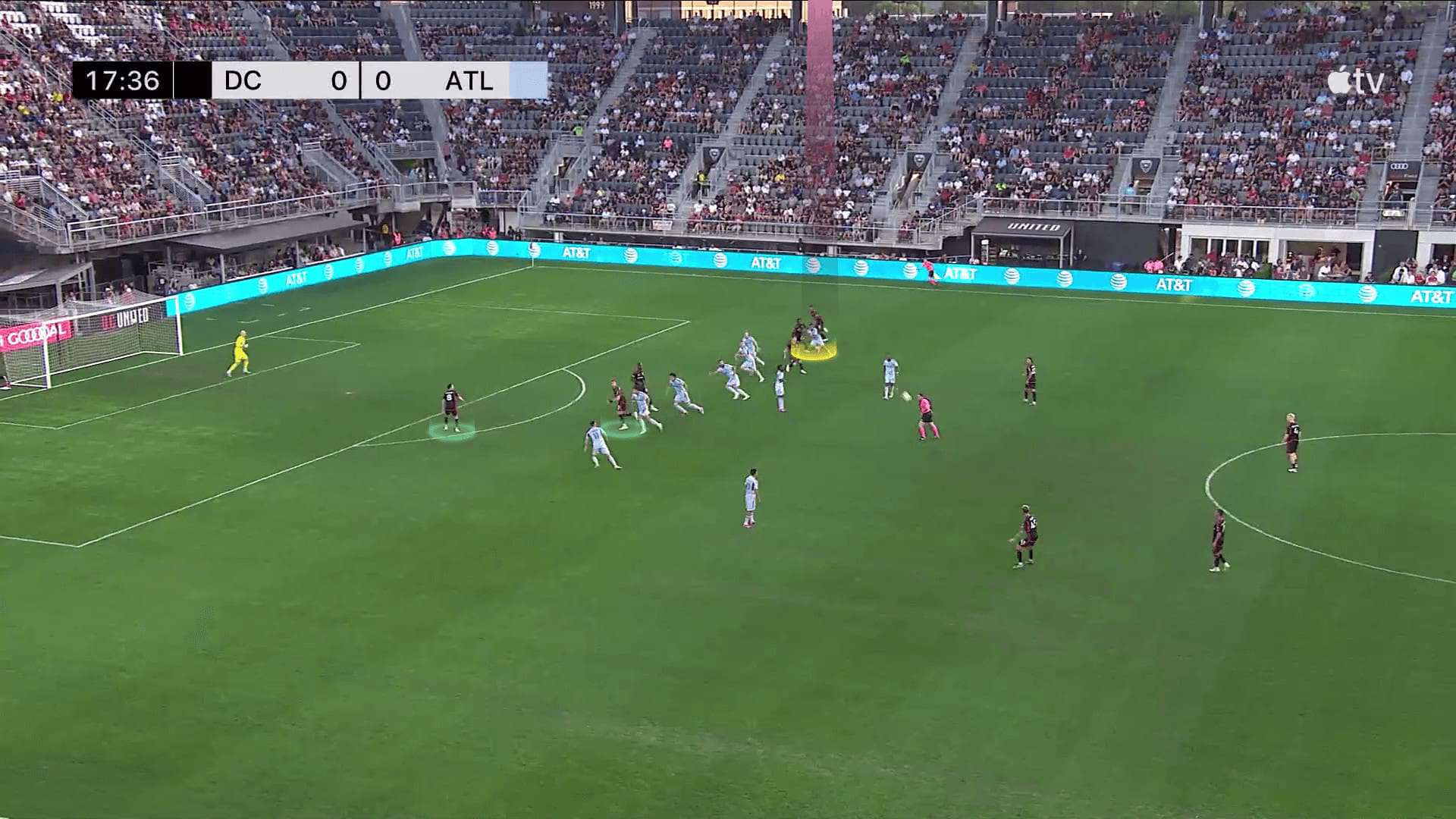
The plan works, but the second-last zonal defender brilliantly realises the trick and saves the ball at the last moment, as shown below.
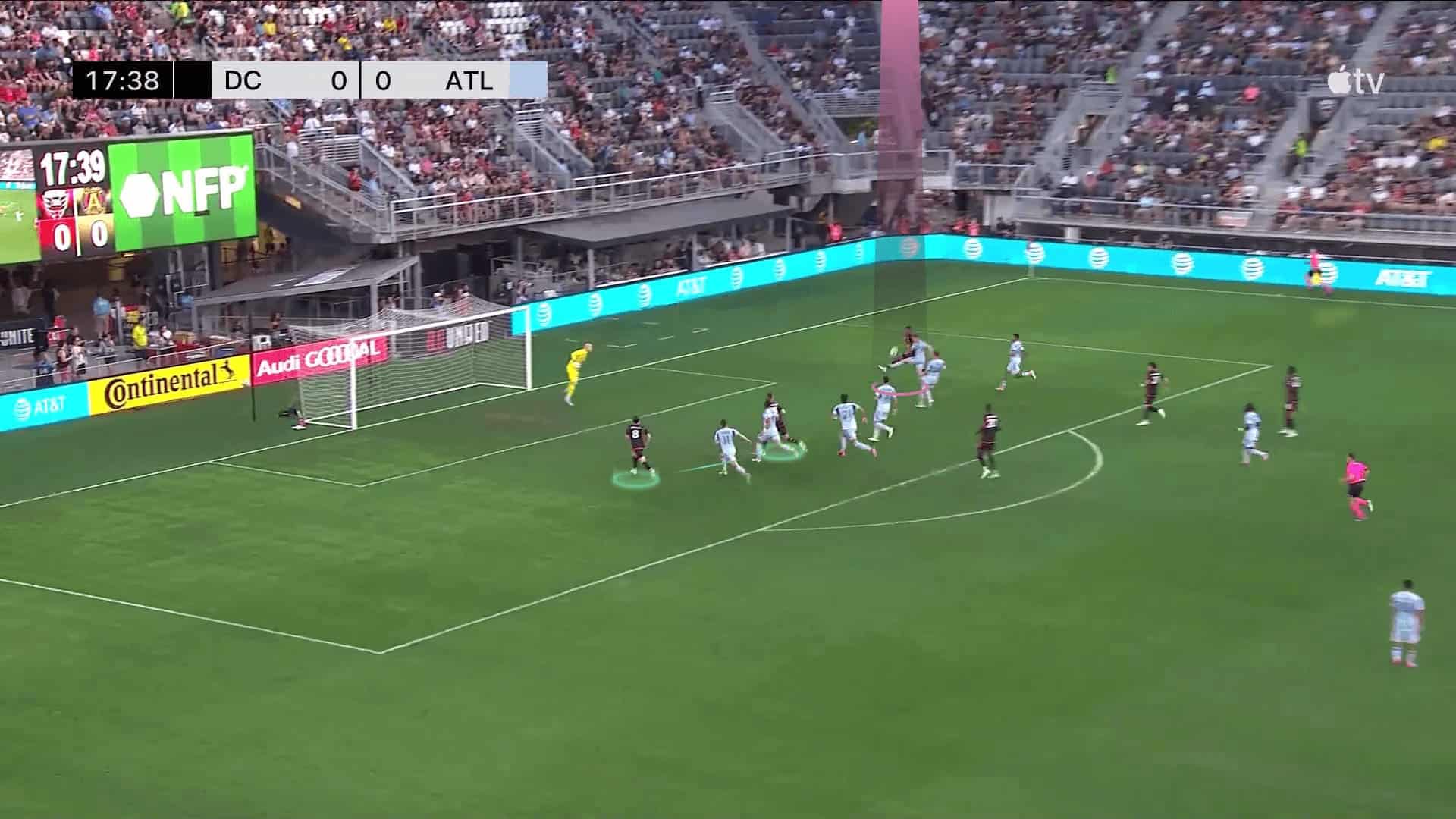
Conclusion
In this analysis, we have explained why DC United is the best in XG from attacking set-pieces in Major League Soccer so far this season while trying to find out the reason behind the gap between the expected goals and actual goals from set-pieces.
We found that the reason may be targeting far areas to get the first touch a lot while usually needing a second touch.
In this set-piece analysis, we have also shown their ability to exploit corners and free-kicks in simple but effective ways.






Comments